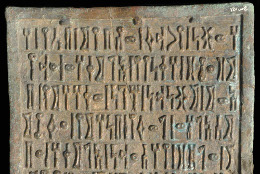
Corpus of Central Middle Sabaic Inscriptions (work in progress)
The Central Middle Sabaic inscriptions are those Middle Sabaic texts originating from the areas of Mārib, Ṣirwāḥ, some cities of the Jawf, and the Yemeni highlands north of Ṣanʿāʾ (P. Stein's Zentrale Dialekte). Chronologically, they are set in the period from the late 4th century BC up to the 3rd century AD. The linguistic border dividing the Central and the Raydanite inscriptions lies in the area of Ġaymān and Noʿḍ. Although this frontier is not clearly defined, at present only the Ġaymān texts have been included in the Central Sabaic corpus.
The inscriptions whose provenance is not univocally ascertained and which do not provide clear Central Sabaic features have been also included in this corpus. Up to now, this collection comprises more than 1600 inscriptions, most of them from the CIH collection and from the CSAI Corpus of Inscriptions from the Yemeni Museums and Corpus of Inscriptions from the British Museum.
Most part of the texts comes from the region of Hamdān (jabal Riyām, al-Ḥuqqa, Ḥāz, Nāʿiṭ), and consists of dedications to local varieties of the God Tʾlb or other deities. Some of those are written on bronze, like the corpus of the tablets from ʿAmrān.
Particularly relevant from the cultural point of view are an edict regulating homicide (CIH 126) and a dedication to Tʾlb which is also a political "manifesto" of a king of S¹mʿy (CIH 37).
Interesting inscriptions from cities of the Jawf (al-Bayḍāʾ, as-Sawdāʾ) and from the temple of Maḥrām Bilqīs in Mārib, mainly housed in the museums of Yemen, are also included in this corpus.
Most part of the texts comes from the region of Hamdān (jabal Riyām, al-Ḥuqqa, Ḥāz, Nāʿiṭ), and consists of dedications to local varieties of the God Tʾlb or other deities. Some of those are written on bronze, like the corpus of the tablets from ʿAmrān.
Particularly relevant from the cultural point of view are an edict regulating homicide (CIH 126) and a dedication to Tʾlb which is also a political "manifesto" of a king of S¹mʿy (CIH 37).
Interesting inscriptions from cities of the Jawf (al-Bayḍāʾ, as-Sawdāʾ) and from the temple of Maḥrām Bilqīs in Mārib, mainly housed in the museums of Yemen, are also included in this corpus.